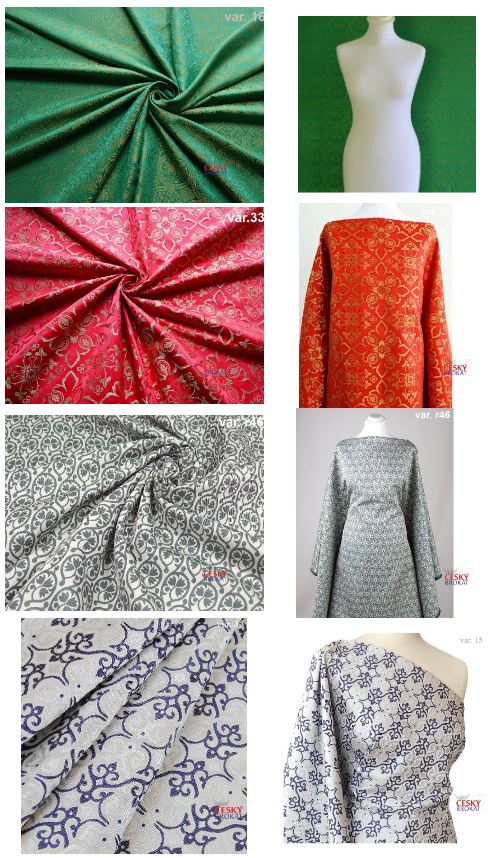From the second half of the 12th century, the artistic style called Gothic begins to manifest itself in the world. It appeared a little later in the Czech lands and also ended later. In Central Europe and Germany, it lasted until the 16th century, when a subsequent renaissance began in Italy and France, which wanted to deny all elements of Gothic and relied on antiquity. Gothic manifested itself in many branches - painting, sculpture, architecture, music, but also fashion. You can find information about this interesting period and samples of brocades, which we can sort by this time, in the article.
Flight, world, history
- The music - originated on the territory of France - showed contact with the Orient. The new instruments were mainly of Arab origin (alut - lute, zurna, daidra, various Arab violins and stringed instruments).
- Sculpture - the sculptures did not stand in space to be glued to the architecture. The highlight was the depiction of the Virgin Mary, who was depicted either as a Madonna with Jesus Christ or as a pieta. A lot of Gothic sculptures can be found in museums and galleries even today.
- Architecture - huge buildings were created (cathedrals - the most famous Notre Dame in Paris). Every European country had, at first glance, a characteristic element - for example, in Germany, houses were built from high-quality bricks that were not plastered.
- Fashion - for men, in the Gothic period, the main things were long shoe tips and long sleeves (shoe tips symbolized a man's status in society = the longer the tips, the higher the status. If the tips were too long, men tied them around their ankles). For women, the so-called "slit sleeves" style was typical. On their heads they wore tall hats that looked like a cone (decorated with a veil), or veils that they tied around their heads. Typical were hennins - known as "white lady's hats".










